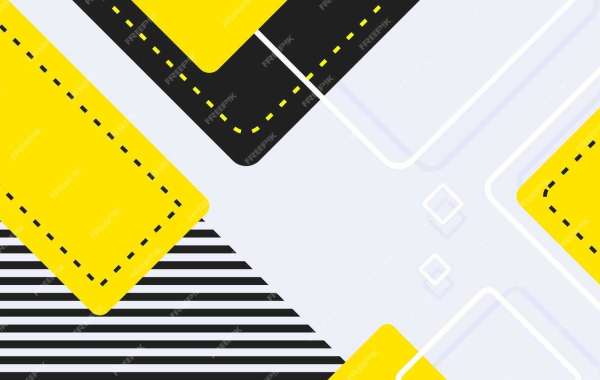There are numerous license classes, each tailored to specific driving requirements and vehicle types. Knowing these classes is essential to ensure your safety behind wheel, whether you're driving an automobile down Broadway or a large truck through the Adirondacks.
The C+E class is referred to as the "master class" of truck driving licences. It permits the use of an uni-directional vehicle and a trailer with an authorised mass of up to 750 kilograms.
Theoretical test
 Theoretical test for driving license C+E is a multi-choice test that tests the driver's understanding of traffic rules and road rules. The test typically consists of 25 questions to be answered in just eight minutes. The test also includes a number of diagrams which drivers must be able to recognize. This test is a vital step in the process of becoming licensed as a driver. You can find test-taking materials and practice tests on the internet and in official DVSA publications.
Theoretical test for driving license C+E is a multi-choice test that tests the driver's understanding of traffic rules and road rules. The test typically consists of 25 questions to be answered in just eight minutes. The test also includes a number of diagrams which drivers must be able to recognize. This test is a vital step in the process of becoming licensed as a driver. You can find test-taking materials and practice tests on the internet and in official DVSA publications.You must be accompanied when taking your theory test by a driver who is licensed. The person you are taking the test with must be in the vehicle with you while you drive (except motorbikes and vehicles that only have one seat). If you'd like to practice on your own, you are able to do so only if you possess a provisional license. You can obtain this license after passing a theory exam and completing a first aid course. Based on the location you live in, you may need to pass a medical exam and an eye test.
Getting your driver's license could be expensive, especially when you consider the costs of classes, theory courses, and fees. It's important to research all your options before you start training. If you can, search for driving schools that offer an option for flexible payment plans and the assurance that you will be able to pass the theory test on the first attempt.
In the majority of countries, there are several types of driving licenses. Each category has different requirements and minimum age requirements for different vehicles. You must be at least 17 years old or older to drive an automobile and 16 years old for motorcycle. Furthermore you must be at least 18 years old to drive a truck and bus. In general, you need a driving licence to operate any motor vehicle on public roads.
 The legal age to drive in Russia is 18. This includes both car and motorcycle drivers. It is possible to obtain a license at age 16, however, you must pass a driver's test and prove proof of insurance. You must also pass a medical examination and have no previous history of using drugs.
The legal age to drive in Russia is 18. This includes both car and motorcycle drivers. It is possible to obtain a license at age 16, however, you must pass a driver's test and prove proof of insurance. You must also pass a medical examination and have no previous history of using drugs.Practical test
A driver's license is a legal authorization, or document, for Kartaxpresspoland an individual to drive motorized vehicles on roads that are open to the public. It is typically plastic and roughly the size of a credit card. In many countries, a driving license is required to operate a vehicle. A driving license typically requires applicants to pass both a theory and practical test. This is done to ensure the security and safety of the vehicle, as well as other road users.
The theory test is used to test a person's understanding of the laws, regulations and rules. The test asks questions about traffic signals, driving rules and the proper operation of an automobile. The test also contains questions about the law that governs alcohol and drug use when driving. It is important to study the Driver's Manual before taking this test, as it can be difficult to answer all the questions correctly.
Drivers who plan to transport heavy items need a licence to drive of the category C+E. This is required for those who wish to work as HGV or lorry drivers. This kind of license has many steps, including passing the driving test and passing a medical examination. You should also hold a valid driving licence for your car (category B) before applying for this category.
There are numerous courses to help you begin your career as a driver of lorries. These courses are often seven days long and will cover the skills and knowledge required to become a lorry driver. Some courses also include a test on the spot.
You must be at least 18 years old age and possess a valid driver's license (category A) to be eligible for the C+E license. You also must complete the Driver Certificate of Professional Completion and undergo a medical examination. It is important to know that any convictions you have had in the past and traffic violations could impact your application for a licence. If you have any civil or criminal convictions, they must be reported to the DVLA as soon as possible.
Medical exam
A medical examination is required for all applicants to an HGV C+E driver's licence. This is essential to ensure that the driver is safe to operate a large trailer and truck combination. It is also a requirement to obtain the Driver Certificate of Professional Competence (CPC). The examiner will take note of any physical or mental limitations and offer suggestions on how to manage these issues. Some of these conditions are temporary and can be controlled through medication or lifestyle changes. Some are permanent and require specialized equipment or device to help drivers drive safely. The examiner may inquire about the driver's medical history or health condition in relation to the type and severity of the problem.
Many commenters are concerned that linking medical certificate information to the CDLIS driver record could raise privacy concerns. This is because the driver's personal medical information would be accessible to their employer. Some drivers and commenters believe this is unfair, given the fact that the same information is already being made available to employers by MEs as part of their DOT medical certificates.
The final rule permits SDLAs to publish on the driver record the contact information for the ME who conducted the examination, which will deter fraud and help FMCSA and State enforcement personnel determine if a driver has been issued a medical certificate that they are not legally able to hold. The final rule will require States to include any additional medical information, including the treatment plan or diagnosis on the driver's record.
HGV training companies also offer a variety of classroom courses to prepare students for the DVLA Medical Examination. These classes typically last seven days long and instruct students on how to operate articulated vehicles as well as perform maneuvers on the roads and industrial areas. A good instructor will have extensive experience with the various types of HGVs and will be able to impart their expertise to the students. The instructors are also able to instruct students on the latest safety guidelines for lorry drivers. These are essential to keep the roads safe and reducing the number of accidents.
Examiner's report
The examiner's report for driving license C+E is an important document that provides a thorough explanation of the Examiner's decision. It is a great idea to include the report of the examiner in your preparation for the exam. It's a great way to identify weak areas and help you enhance your abilities. The examiner's report can also help you prepare for a re-exam so you can avoid common mistakes that could cause you to fail the test.
The CE category of licence allows drivers to drive rigid (artic) lorries, trailers and tractors up to the weight limit of 750kg. This is the most comprehensive driving license for HGVs and allows drivers to transport goods professionally or privately. But, you must have a car driving licence before applying for this licence.
The theory and practical tests are required to obtain a driving licence for the truck. The theory test is comprised of a written test as well as a test of road signs recognition. The practical test is based on driving an articulated vehicle and a trailer. You'll also have to undergo a health check and take an eye test. This is a legal requirement to ensure you're fit enough to be able to drive.
It isn't easy to obtain a lorry permit in the UK. Before you start your journey, it's best to complete some HGV training courses. These training courses are usually 7 to 7 days long and provide you with the fundamental skills to operate an articulated vehicle safely. After that, you'll be required to obtain a Driver Certificate of Professional Competence to become a licensed driver.
During your driving test, you will be asked questions on road safety and laws. Make sure you answer them correctly to avoid a penalty. In addition to this, you should also read the manual of your vehicle and familiarize yourself with the rules of the road. Speak to the examiner should you have any questions. This will assist you in being able to pass your test.







